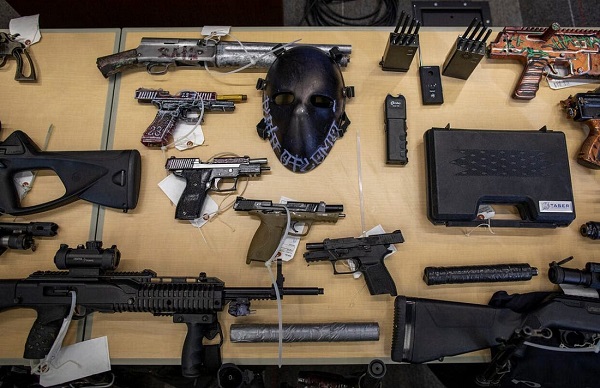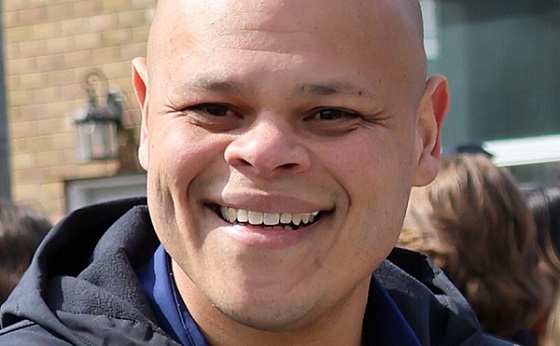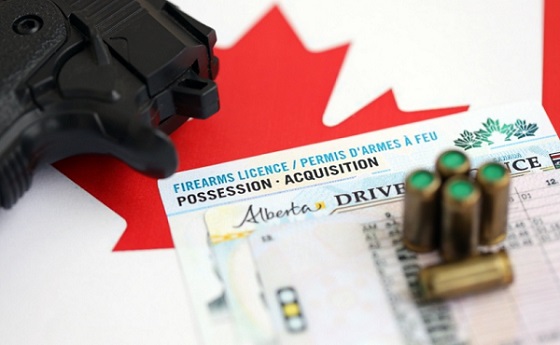Uncategorized
Albertans no longer required to report collisions when damages under $5,000.00

Saving drivers and law enforcement time
Alberta’s government is cutting red tape and saving Albertans time by increasing the property damage collision reporting threshold to $5,000 from $2,000.
To better reflect current vehicle repair costs, effective Jan. 1, drivers will not have to report property damage from a collision to law enforcement unless the cost of the damage is more than $5,000. The new $5,000 threshold was a carefully chosen figure to reduce reporting minor collisions while also making it difficult for fraudulent resales of damaged vehicles.
This change will also free up law enforcement, who are required to commit a significant number of policing resources for processing collision reports. With this change, police officers and administrative staff can spend more time improving public safety.
“Traffic accidents happen. Alberta is saving drivers time and money by not having them report simple fender-benders to the police. Thousands of traffic accident reports clog up our justice system and strains police resources. This is a common-sense change that will benefit drivers and police.”
“We continue to cut red tape by increasing the collision reporting threshold. Waiting in line to file a report is stressful, time-consuming and takes you away from your work and family. This change will alleviate that stress and get you back on the road faster.”
Collisions resulting in injuries and fatalities will continue to be reported regardless of the estimated cost of property damage repairs. Future increases to the collision reporting threshold will be adjusted for inflation based on annual calculations using the Statistics Canada consumer price index, further reducing red tape and time spent by Albertans reporting low dollar value collisions.
“AACP is supportive of increasing the threshold for the reporting of property damage collisions to police. These increases better reflect modern vehicle repair and replacement costs and will result in less minor, non-injury collisions having to be reported to police.”
“This increase to the damage reporting threshold aligns with a resolution Alberta Municipalities members passed at our 2023 convention. We are pleased to see the provincial government take action on this issue.”
The carrier collision reporting threshold will be increased to match the collision reporting threshold of $5,000. Commercial carriers will save time by no longer having to go through an administrative process to eliminate low dollar value property damage collisions from their carrier profile.
“This is excellent news for the transportation mobility industry. We welcome the Alberta government’s move to increase the collision reporting threshold, as it will cut red tape and save time for transportation mobility providers and Alberta consumers.”
Alberta last increased its property damage collision reporting threshold to $2,000 from $1,000 on Jan. 1, 2011, and implemented the commercial carrier reporting threshold ($1,000) in 2009.
Quick facts
- In 2021, there were 89,976 property damage-only collisions reported by law enforcement.
- On average, about 90 per cent of all collisions only involve property damage.
- Data from the Insurance Bureau of Canada shows that in 2022, the average property damage collision claim in Alberta was $6,756.
Uncategorized
Cost of bureaucracy balloons 80 per cent in 10 years: Public Accounts

The cost of the bureaucracy increased by $6 billion last year, according to newly released numbers in Public Accounts disclosures. The Canadian Taxpayers Federation is calling on Prime Minister Mark Carney to immediately shrink the bureaucracy.
“The Public Accounts show the cost of the federal bureaucracy is out of control,” said Franco Terrazzano, CTF Federal Director. “Tinkering around the edges won’t cut it, Carney needs to take urgent action to shrink the bloated federal bureaucracy.”
The federal bureaucracy cost taxpayers $71.4 billion in 2024-25, according to the Public Accounts. The cost of the federal bureaucracy increased by $6 billion, or more than nine per cent, over the last year.
The federal bureaucracy cost taxpayers $39.6 billion in 2015-16, according to the Public Accounts. That means the cost of the federal bureaucracy increased 80 per cent over the last 10 years. The government added 99,000 extra bureaucrats between 2015-16 and 2024-25.
Half of Canadians say federal services have gotten worse since 2016, despite the massive increase in the federal bureaucracy, according to a Leger poll.
Not only has the size of the bureaucracy increased, the cost of consultants, contractors and outsourcing has increased as well. The government spent $23.1 billion on “professional and special services” last year, according to the Public Accounts. That’s an 11 per cent increase over the previous year. The government’s spending on professional and special services more than doubled since 2015-16.
“Taxpayers should not be paying way more for in-house government bureaucrats and way more for outside help,” Terrazzano said. “Mere promises to find minor savings in the federal bureaucracy won’t fix Canada’s finances.
“Taxpayers need Carney to take urgent action and significantly cut the number of bureaucrats now.”
Table: Cost of bureaucracy and professional and special services, Public Accounts
| Year | Bureaucracy | Professional and special services |
|
$71,369,677,000 |
$23,145,218,000 |
|
|
$65,326,643,000 |
$20,771,477,000 |
|
|
$56,467,851,000 |
$18,591,373,000 |
|
|
$60,676,243,000 |
$17,511,078,000 |
|
|
$52,984,272,000 |
$14,720,455,000 |
|
|
$46,349,166,000 |
$13,334,341,000 |
|
|
$46,131,628,000 |
$12,940,395,000 |
|
|
$45,262,821,000 |
$12,950,619,000 |
|
|
$38,909,594,000 |
$11,910,257,000 |
|
|
$39,616,656,000 |
$11,082,974,000 |
Uncategorized
Trump Admin Establishing Council To Make Buildings Beautiful Again


From the Daily Caller News Foundation
By Jason Hopkins
The Trump administration is creating a first-of-its-kind task force aimed at ushering in a new “Golden Age” of beautiful infrastructure across the U.S.
The Department of Transportation (DOT) will announce the establishment of the Beautifying Transportation Infrastructure Council (BTIC) on Thursday, the Daily Caller News Foundation exclusively learned. The BTIC seeks to advise Transportation Secretary Sean Duffy on design and policy ideas for key infrastructure projects, including highways, bridges and transit hubs.
“What happened to our country’s proud tradition of building great, big, beautiful things?” Duffy said in a statement shared with the DCNF. “It’s time the design for America’s latest infrastructure projects reflects our nation’s strength, pride, and promise.”
“We’re engaging the best and brightest minds in architectural design and engineering to make beautiful structures that move you and bring about a new Golden Age of Transportation,” Duffy continued.
Mini scoop – here is the DOT’s rollout of its Beautifying Transportation Infrastructure Council, which will be tasked with making our buildings beautiful again. pic.twitter.com/
9iV2xSxdJM — Jason Hopkins (@jasonhopkinsdc) October 23, 2025
The DOT is encouraging nominations of the country’s best architects, urban planners, artists and others to serve on the council, according to the department. While ensuring that efficiency and safety remain a top priority, the BTIC will provide guidance on projects that “enhance” public areas and develop aesthetic performance metrics.
The new council aligns with an executive order signed by President Donald Trump in August 2025 regarding infrastructure. The “Making Federal Architecture Beautiful Again” order calls for federal public buildings in the country to “respect regional architectural heritage” and aims to prevent federal construction projects from using modernist and brutalist architecture styles, instead returning to a classical style.
“The Founders, in line with great societies before them, attached great importance to Federal civic architecture,” Trump’s order stated. “They wanted America’s public buildings to inspire the American people and encourage civic virtue.”
“President George Washington and Secretary of State Thomas Jefferson consciously modeled the most important buildings in Washington, D.C., on the classical architecture of ancient Athens and Rome,” the order continued. “Because of their proven ability to meet these requirements, classical and traditional architecture are preferred modes of architectural design.”
The DOT invested millions in major infrastructure projects since Trump’s return to the White House. Duffy announced in August a $43 million transformation initiative of the New York Penn Station in New York City and in September unveiledmajor progress in the rehabilitation and modernization of Washington Union Station in Washington, D.C.
The BTIC will comprise up to 11 members who will serve two-year terms, with the chance to be reappointed, according to the DOT. The task force will meet biannually. The deadline for nominations will end Nov. 21.
-

 Business2 days ago
Business2 days agoThe Climate-Risk Industrial Complex and the Manufactured Insurance Crisis
-

 Health2 days ago
Health2 days agoThe Data That Doesn’t Exist
-

 Crime2 days ago
Crime2 days agoInside the Fortified Sinaloa-Linked Compound Canada Still Can’t Seize After 12 Years of Legal War
-

 Great Reset23 hours ago
Great Reset23 hours agoProposed ban on euthanasia for mental illness sparks passionate debate in Canada’s Parliament
-

 Censorship Industrial Complex23 hours ago
Censorship Industrial Complex23 hours agoLiberals gain support for ‘hate speech’ bill targeting Bible passages against homosexuality
-

 Automotive11 hours ago
Automotive11 hours agoThe $50 Billion Question: EVs Never Delivered What Ottawa Promised
-

 National2 days ago
National2 days agoLiberal bill “targets Christians” by removing religious exemption in hate-speech law
-

 C2C Journal10 hours ago
C2C Journal10 hours agoWisdom of Our Elders: The Contempt for Memory in Canadian Indigenous Policy










